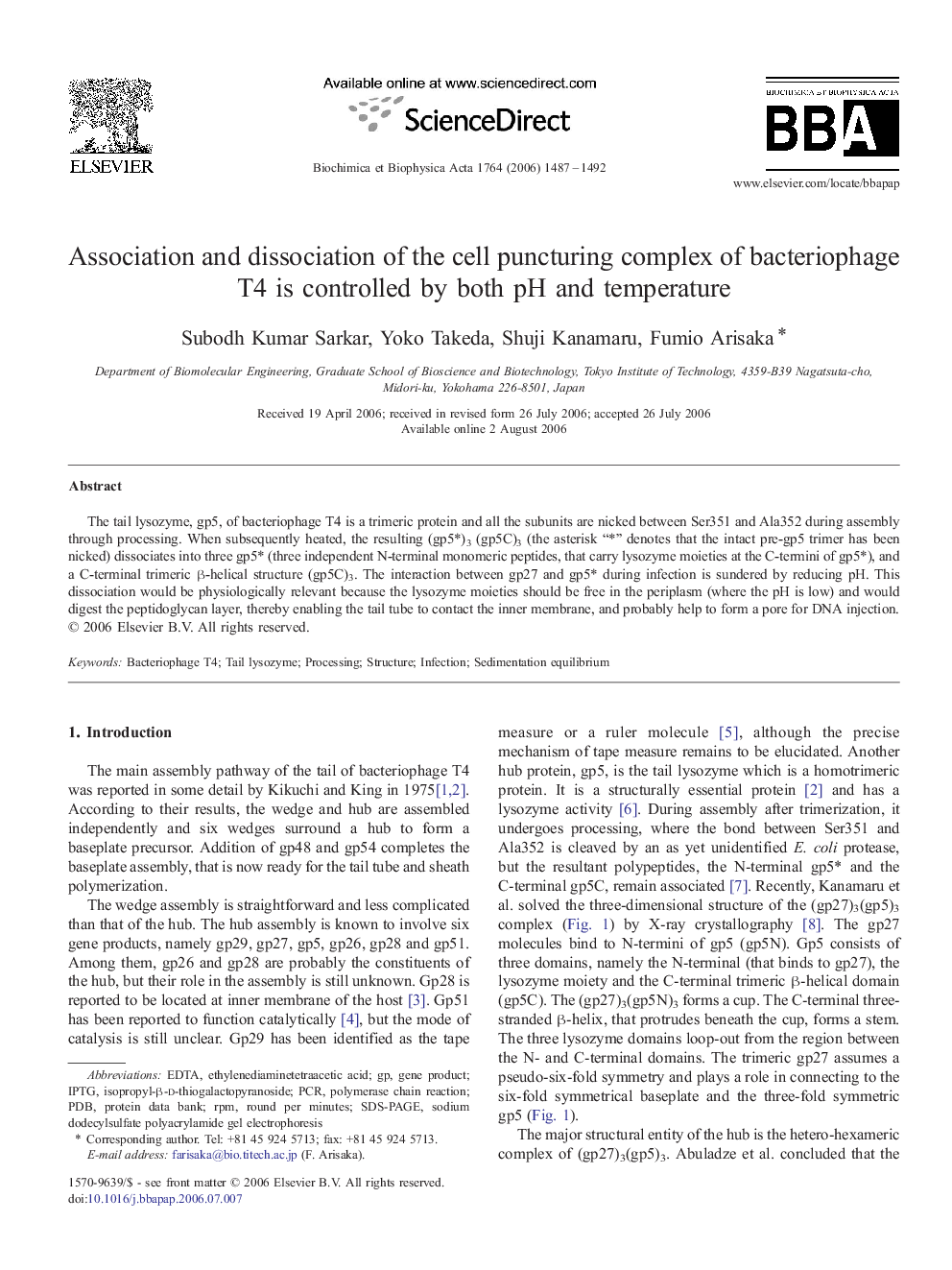| Article ID | Journal | Published Year | Pages | File Type |
|---|---|---|---|---|
| 1179481 | Biochimica et Biophysica Acta (BBA) - Proteins and Proteomics | 2006 | 6 Pages |
The tail lysozyme, gp5, of bacteriophage T4 is a trimeric protein and all the subunits are nicked between Ser351 and Ala352 during assembly through processing. When subsequently heated, the resulting (gp5*)3 (gp5C)3 (the asterisk “*” denotes that the intact pre-gp5 trimer has been nicked) dissociates into three gp5* (three independent N-terminal monomeric peptides, that carry lysozyme moieties at the C-termini of gp5*), and a C-terminal trimeric β-helical structure (gp5C)3. The interaction between gp27 and gp5* during infection is sundered by reducing pH. This dissociation would be physiologically relevant because the lysozyme moieties should be free in the periplasm (where the pH is low) and would digest the peptidoglycan layer, thereby enabling the tail tube to contact the inner membrane, and probably help to form a pore for DNA injection.
